This is a super simple coffee soap recipe! I love a good coffee soap that exfoliates your skin.
Coffee Usage in Soap
I like to use 1/4 teaspoon to 1 tablespoon of coffee grinds per pound of base oils. Just realize that the more you use, the more exfoliating your soap will be.
You can incorporate coffee into your soap in several different ways.
- You can simply toss the coffee grounds into your lye solution. The hot lye solution will brew the coffee.
- You can toss the coffee grounds into your base oils or mix it into traced soap.
- You can brew coffee and use the coffee for 100% of your water amount. You can choose not to add the grounds at all if you don’t want your soap to be exfoliating.
I like to grind my coffee using a coffee grinder pretty fine, because I like it more powdery and less scratchy.
SAFETY WARNING! If you’ve never made soap before, be sure to start with our basic soap making guide. This recipe and instructions are for experienced soap makers. Be sure to gear up in your goggles and gloves before you make soap.
Simple Coffee Soap Recipe
I call this recipe simple, because it only uses two base oils…olive oil and coconut oil! I used 40% coconut oil and 60% olive oil. I know some people will ask if that is too much coconut oil. Nope! Try it and see how you like it. The high olive oil (moisturizing) balances the high coconut oil (drying), creating a nice soap. I also used a 8% superfat with this soap.
- Coconut Oil – 12.8 oz. (40%)
- Olive Oil – 19.2 oz. (60%)
- Sodium Hydroxide – 4.5 oz.
- Water – 9 oz.
- Sweet Basil Essential Oil – 20 grams
- Lemon Essential Oil – 24 grams
- Geranium Essential Oil – 2 grams
- Lavender Essential Oil – 12 grams
This essential oil blend is from Benajmin’s newest eBook, Cold Process Soap Recipes. It smells so wonderful!
Step 1: Make your lye solution. Weigh the water and lye into separate containers. Pour the lye into the water while stirring. Be sure to mix your lye solution in a well-ventilated area.
Step 2: Weigh the coconut oil and melt.
Step 3: Add the olive oil to the melted coconut oil.
Step 4: Add your coffee grounds and essential oil blend to the base oils.
Step 5: Once your temperatures have cooled to under 100 degrees F, pour your lye solution in the oils and mix to trace.
Step 6: Once you reach trace, pour into your mold. I used a 12 Cavity Rectangle mold from Bramble Berry. You can pour this into a 10″ silicone loaf mold as well.
I topped my bars with whole coffee beans just for fun!
Unmold after 24 hours.
Let your soap cure for 4 weeks!
Happy Soaping!
– Amanda Gail

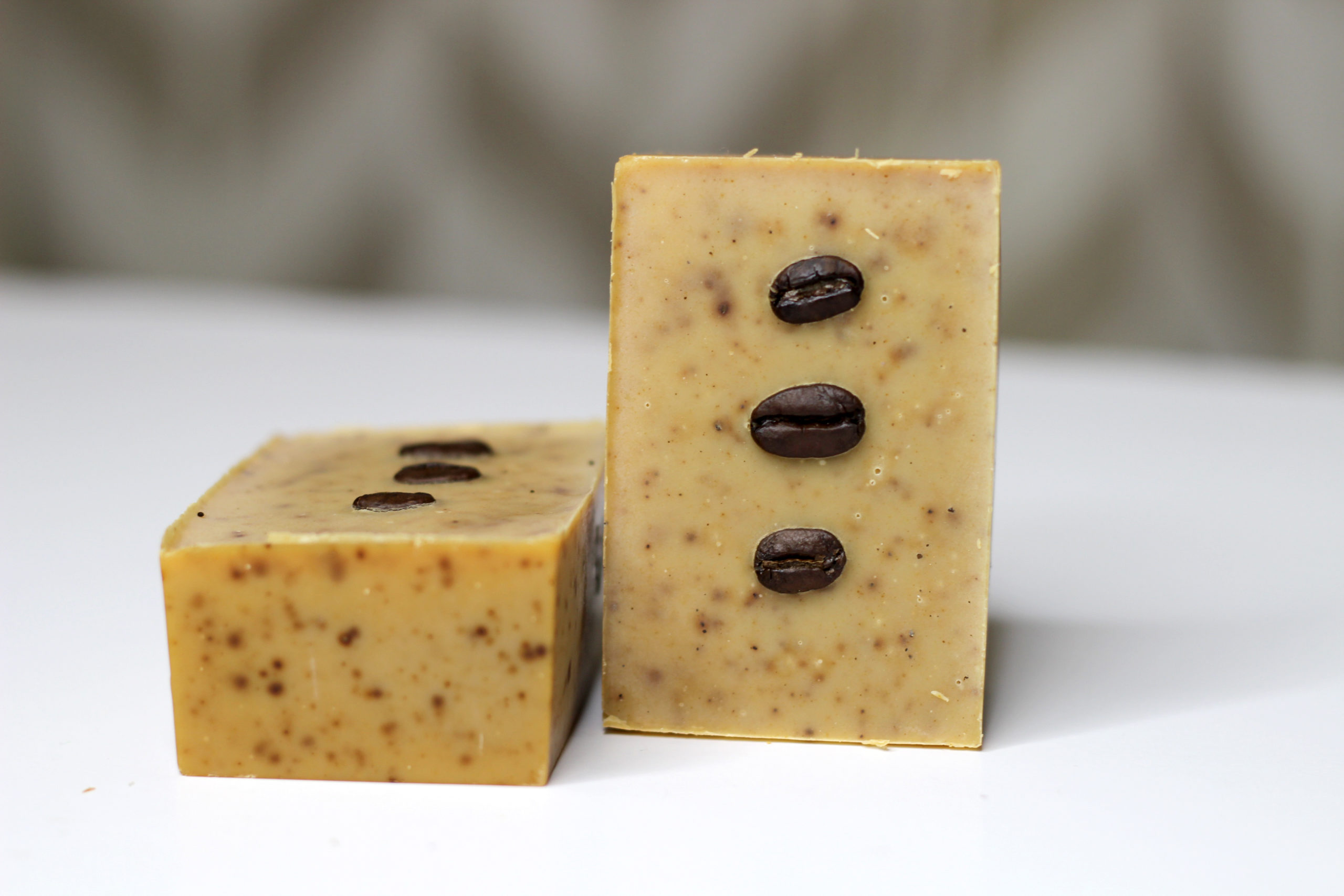
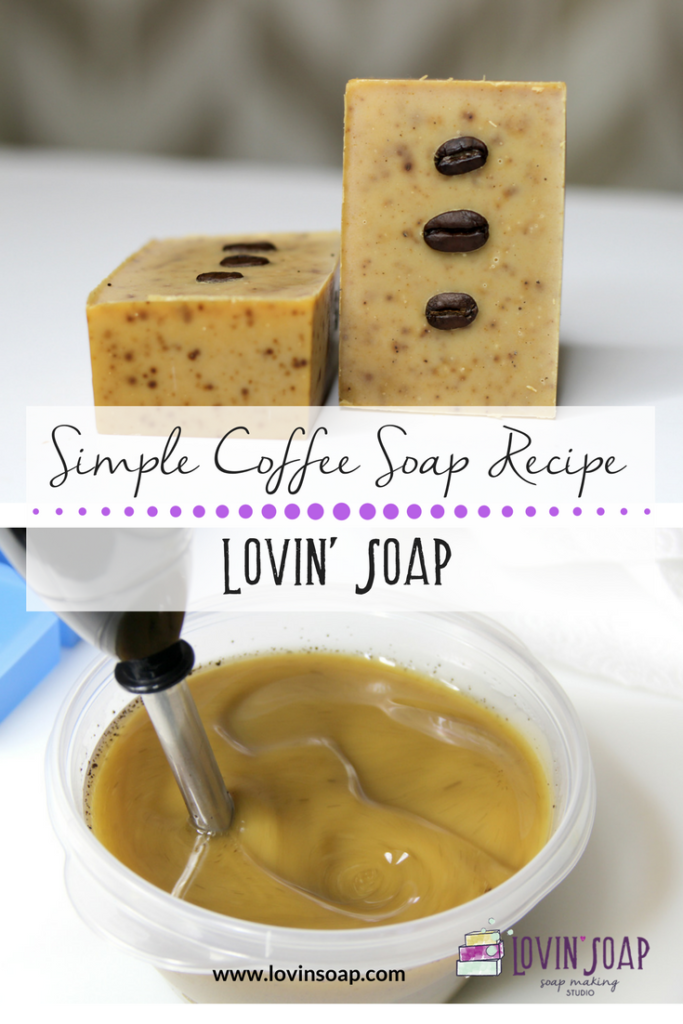
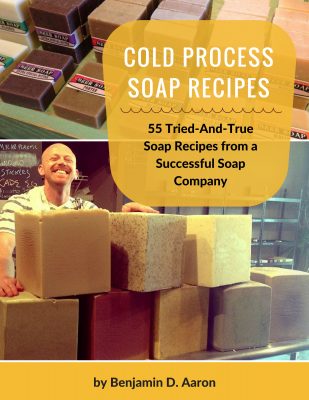
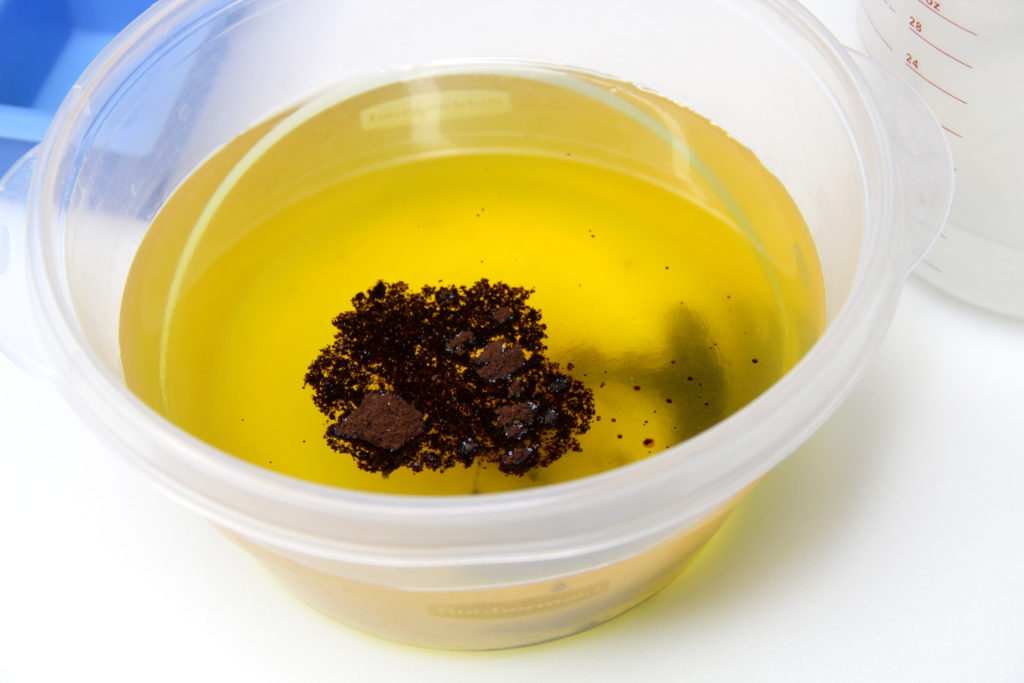
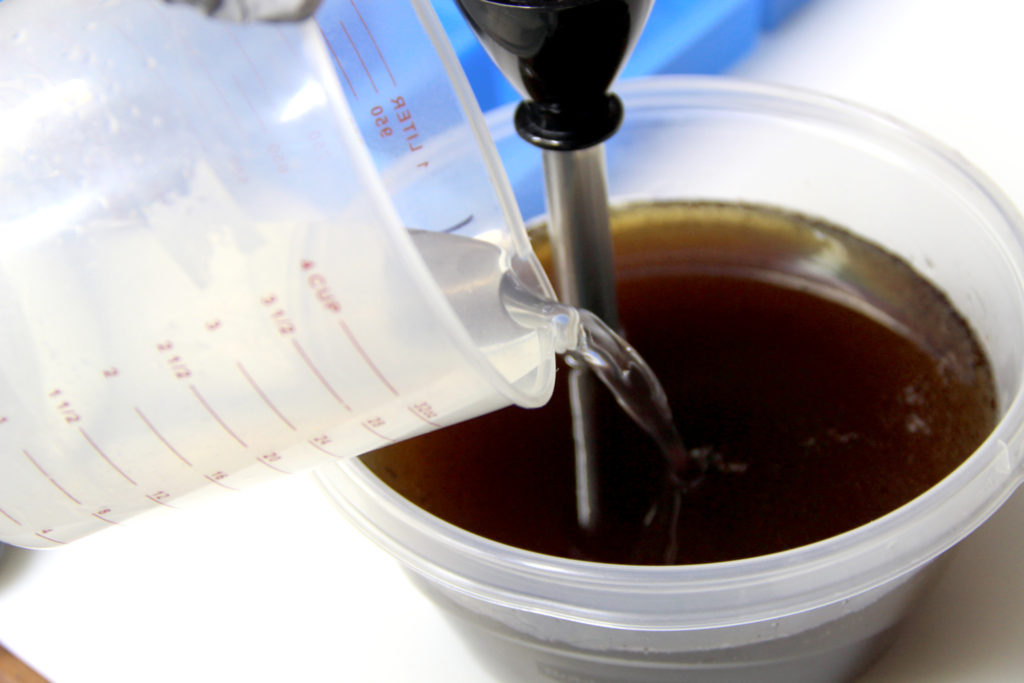
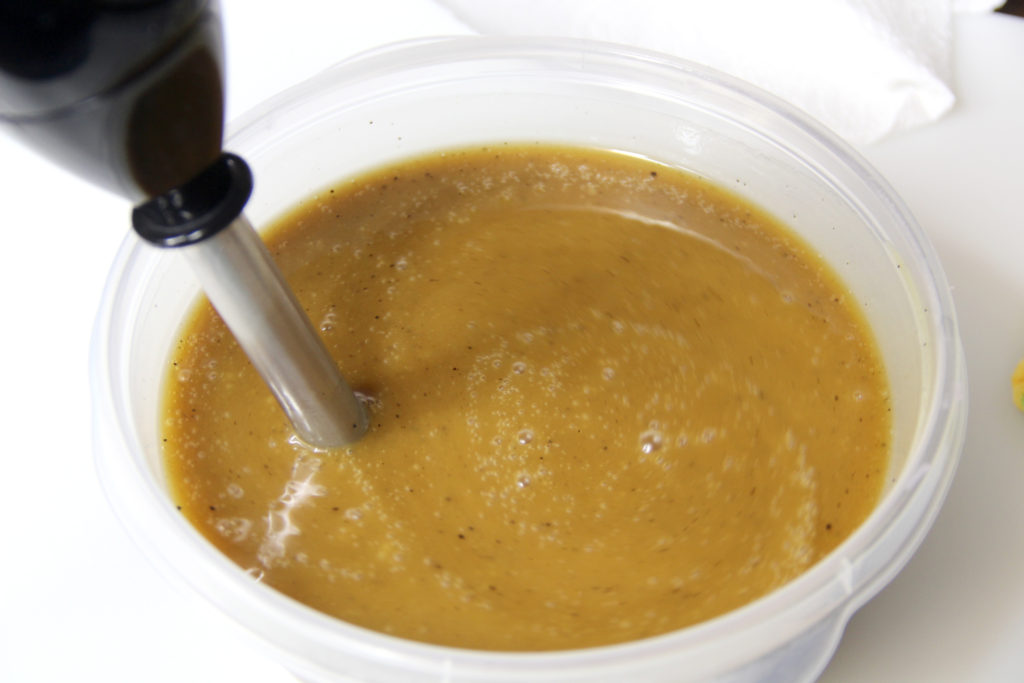
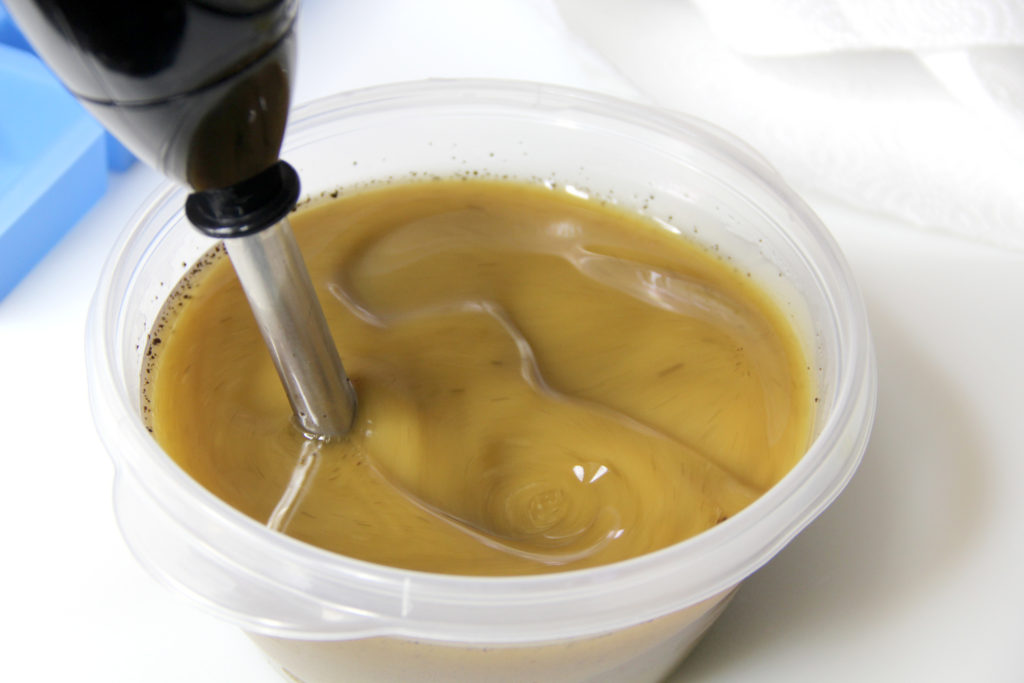
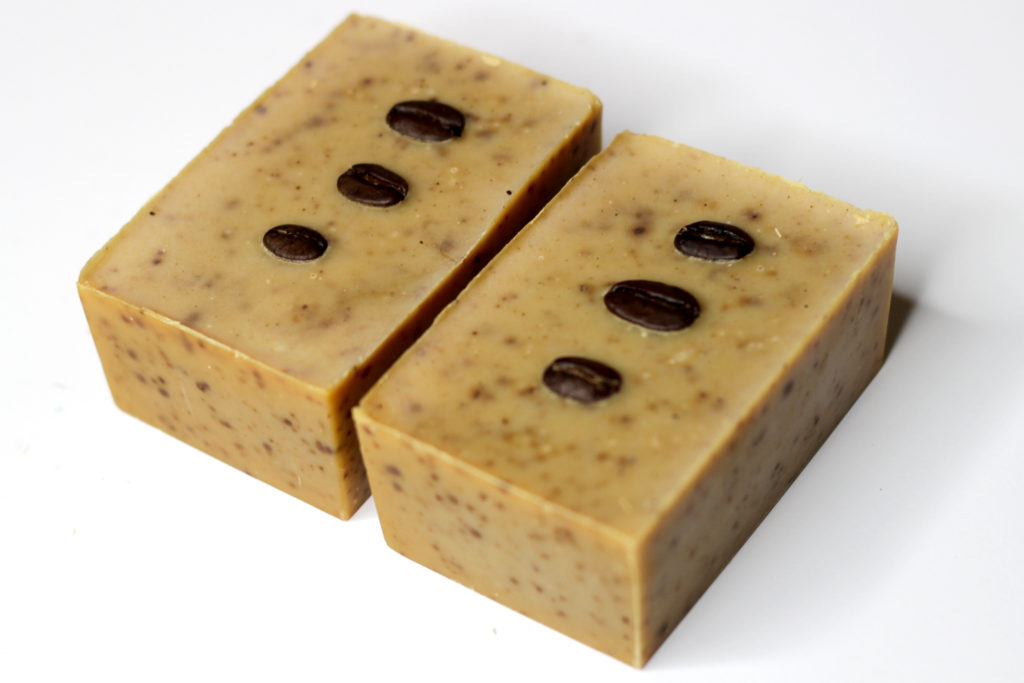
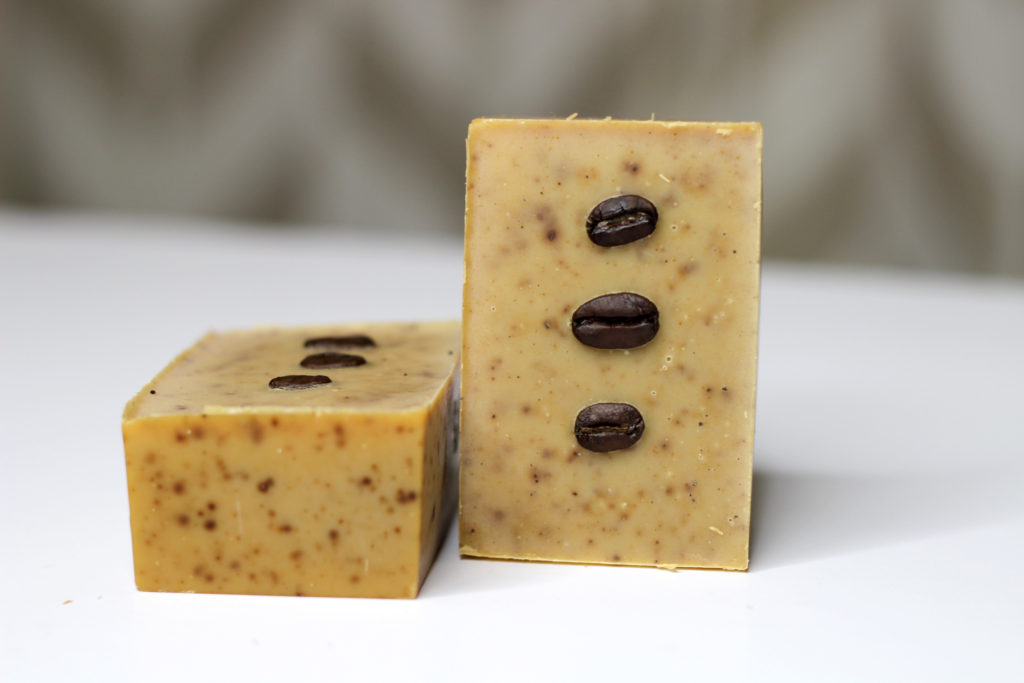
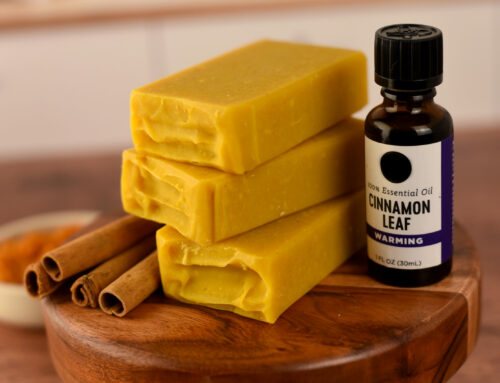
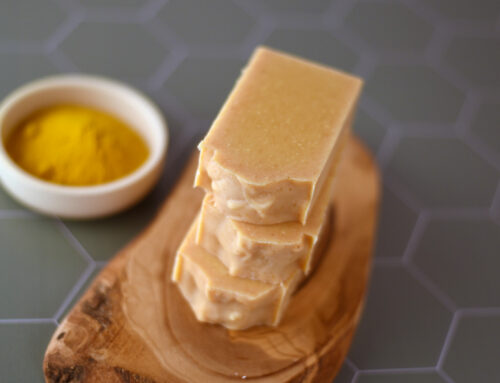

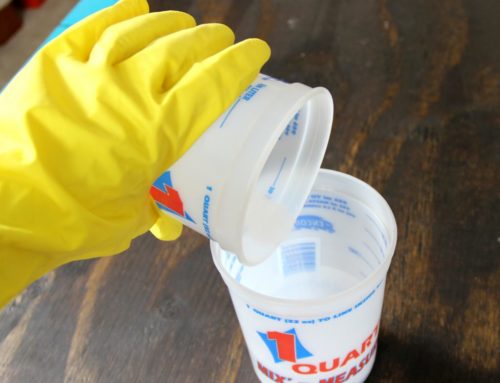

Hi Amanda, I made this soap and it turned out great, but when I put it in my coffee it tasted like soap and not coffee why is that?
hi amanda
just wondering – i dont have the basil essential oil – can i substitute another essential oil and if i can what would you suggest i use
thanks
liz
Hi Amanda, I love this recipe. I am new to soap making and do not have the biggest stockpile of oils. I am also trying to avoid palm oil. This recipe is incredible considering it only has 2 oils. Do you have any other recipes that only contain Olive oil and Coconut oil? I also own sweet almond, Hemp and Grapeseed but I find most other recipes have 5-6 oils. I have just made a plain (no coffee) batch of this so I will see how it performs. This is my staple soap recipe at the moment <3
My two batches of soap erupted in middle. Temperature of lye is 70F and oil is 90F at time of mixing.
it didnt trace enough so i might have over usee mixer noticely.
Just wonder what caused volcano soap if you can think of please kindly comment. Thank you!
Hi Amanda! I made a coffee soap with coffee ground. After it cured 6 weeks, I noticed the bars have some brown spots but I’m not sure if its DOS. All ingredients were measured and weighed accurately. All oils added were in good condition. I brewed the coffee with distilled water and used it as water amount. The coffee was even toasted dry in an oven, let it cool then added to the oil batter. No EO added as it was intended to be unscented bar. Hope I can send some photo to share it with you just to make sure. Thank you.
Hi Amanda new to to soap crafting a d want to try this recipe how many bars will this recipe produce and can I increase the ingredients to get more bars
Christine Wichmann I just finished a double batch of this soap. I brewed a extra strong pot of Starbucks French Roast and used that instead of the water. I used Starbucks EO I purchased on Amazon instead of the OE’s the recipe called for. Unfortunately when I was finished I did not like the color, it looked kinda like baby poop. I solved it with adding a little Cocoa. The bars look beautiful. Like rich chocolate. I wanted this batch to appeal to my male customers . I am hoping that the coffee grinds are good for gentle exfoliating and the yummy coffee smell helps to sell them. I am somewhat new to this and I am really enjoying the entire process.
Hi Robyn, I just made this soap, too. I used all water, and halved the coffee, fine grind. I like the light color. I used all the EOs in the recipe, but cut them back a bit. Also made only 1/3 of the recipe after scaling it down, and then plugging the oils into soapcalcalc dot net to get correct lye and water amounts. I’m finally feeling more comfortable using their calculator. I got fancy and did a pencil line of cocoa powder. If you are on the Facebook group page GREAT Beginner Soap Making, I’ll be posting a photo soon. This was only the second batch of soap I’ve made, and so far, so good. More are planned.
I have never made soap before, but this recipe is really encouraging me to try. One question: you say you used 8% superfat. What is superfat? It is not in the recipe and I don’t see anything else listed that is 8%.
As Amanda does not seem to be answering recent questions, a reply from anyone else would be appreciated. Thank you.
Hi Kathleen, Superfat in soap recipes means that there are more oils in the recipe than the lye can saponify in the chemical reaction that creates soap when the lye water is mixed with the oils. In this recipe there is 8% more oil than those the lye reacts with. Those oils are left to nourish your skin and keep the soap from being harsh. I think most soapmakers use at least 5% superfat. I encourage you to Google superfatting in cold process soap making for more info. And invite you to join “Great Beginner Soapmaking” group on Facebook! It’s a great forum for Q&A and sharing. They also have a mentor program if you are a beginner. I also am a member of “Saponification Nation” group on FB which was started by Amanda.
Btw, I just tried the first coffee soap I made 4 weeks ago. Definitely too much coffee grounds..too scratchy for hand or face soap! And they were brewed not dry. So go easy on the grounds the first time to see how you like it!. I made a top layer colored dark brown with cocoa powder..very cool!
Hope this helps.
Thanks so much for your detailed reply, Christine. I will Google superfatting to learn more about it. And thanks for the referral to the 2 Fb groups. I’ll check them out. There’s obviously much to learn before I make my first soap. I take it that you used this recipe for your coffee soap, and perhaps you used the higher amount of recommended coffee. The layered soap with cocoa powder sounds interesting. Great idea.
Thanks again.
You’re welcome and much fun in your new adventure. I think I used the recipe but didn’t really measure the grounds. Since the coffee is substituted for water, it has to be weighed exactly, with the exact amount of lye called for. The coffee was added as frozen cubes so as not to scorch it. Start out with a super simple recipe, though. I have been progressing conservatively and so have had no failed batches!
This recipe looks simple. Is it really not,? Thanks for the tips. I joined the Great Beginner Facebook group and I’m already learning from others’ comments.
Hi Amanda, I’m trying to learn about water discounting and entered this recipe into Soapcalc. Many soap makers in your Saponification group do not use the SOAPCALC DEFAULT of 38% “Water as Percent of Oil Weight”. I’m wondering what is the discount of this recipe? From entering multiple values into Soapcalc is seems to be 28% to 29%. Is this correct? This is for my learning purpose as I will follow your recipe. I changed the default superfat on Soapcalc from 5% to 7% and that came out right for your recipe. Is that why this soap isn’t drying as you mentioned?
I see that this post is from last year but hopeful you will still see this!
Thanks for your wonderful work and sharing,
Christine
hi the Essential Oil not too much ???
Hi, I have a question about what to substitute if I take out the essential oils in a cold process recipe. I have sensitive skin so the essential oils bother me at times. Is there a generic rule that I can follow, or would it be dependent on the recipe?
Thank you!
Made a batch yesterday, using room-temperature method and hot process. Used chilled coffee in place of water. This being my fourth batch of soap in total, and second recipe I’ve tried, I didn’t really expect to like it as much as my first recipe, featuring shea, coconut, sunflower, olive and castor oils, as wellas milk and honey. I must admit, this is easier, fewer ingredients, and still lathers and moisturizes. I’m impressed, and quite possibly hooked on soaping, thanks for sharing.
For those with coconut allergy what would other oil options be. The normal babassu oil substitution? Thank you!
Hi Amanda
If I eliminated the essential oils do I have to add more oil to my oils?
sO IF i WANT TO i CAN USE THE 6 CAVITY MOLD SQUARE
WITH USE OF THE COCONUT OIL IS THAT 76 DEGREE OR 96 DEGREE
Hi Amanda,
I tried this recipe today and it’s my first time making homemade soap. Could you tell me why my soap is looking darker on the top?
It was probably going through gel phase. Do a google search for gel phase in soapmaking you’ll find more info. 🙂
That seems like a LOT of essential oil for the amount of base oils. SM3 and SoapCalc put it at nearly double what’s usually recommended. Why so much? Also, I don’t have any sweet basil and don’t want to wait. Any recommendations for substitutes?
thats a total of 58 grams of EO not ounces, the oils are in ounces not the fragrance. Sounds right for a 2lb batch
I use about 1 oz per pound of oils for EO. That is a bit heavy for some. You can certainly cut it in half if you want. If you don’t have basil, I would use something herbal or woodsy, such as cedarwood, spruce…etc.
I got so carried away with how your soap looked, I forgot to ask my question. With the fine coffee grounds, do you think this soap would be gentle enough for using on the face?
I think so! You can really grind them down, almost to a powder. 🙂
Thank you Amanda 🙂
Also, used coffee grounds are gentler than unused grounds
I had heard about putting the used coffee grounds in the soap. Or doing half used & half fresh. Thanks Nancy.
I love the coffee beans on the soap. It looks like your bar of soap is wearing a button up shirt.
Amanda, I was wondering, since the price of Olive Oil has skyrocketed, could I use Canola Oil? I read that it is ok, but I want to hear your opinion and I think this recipe will be fabulous to try.
Looking forward for your answer.
On the coconut oil and olive oil, when you list 12.8 and 19.2, is that ounces?
Yes it is! Thank you…just fixed it. 🙂 -Amanda